Timeline: St. Patrick's party changes marked by gates, wristbands, porta-potties, snakes
The Savannah St. Patrick's Day parade dates to 1824. The post-parade party is a much more recent phenomenon.
Revelers extended the celebration to River Street following the urban renewal of the waterfront in the mid-1970s. The party grew into a tradition over the next two decades, with tens of thousands of merrymakers flooding the cobblestones.
The large crowds prompted the city government to formalize a festival starting in 1999. Fencing and gates were erected at the entrance ramps to River Street, and several other restrictions were put in place, including a requirement that partiers show ID and purchase wristbands in order to drink alcohol on the street.
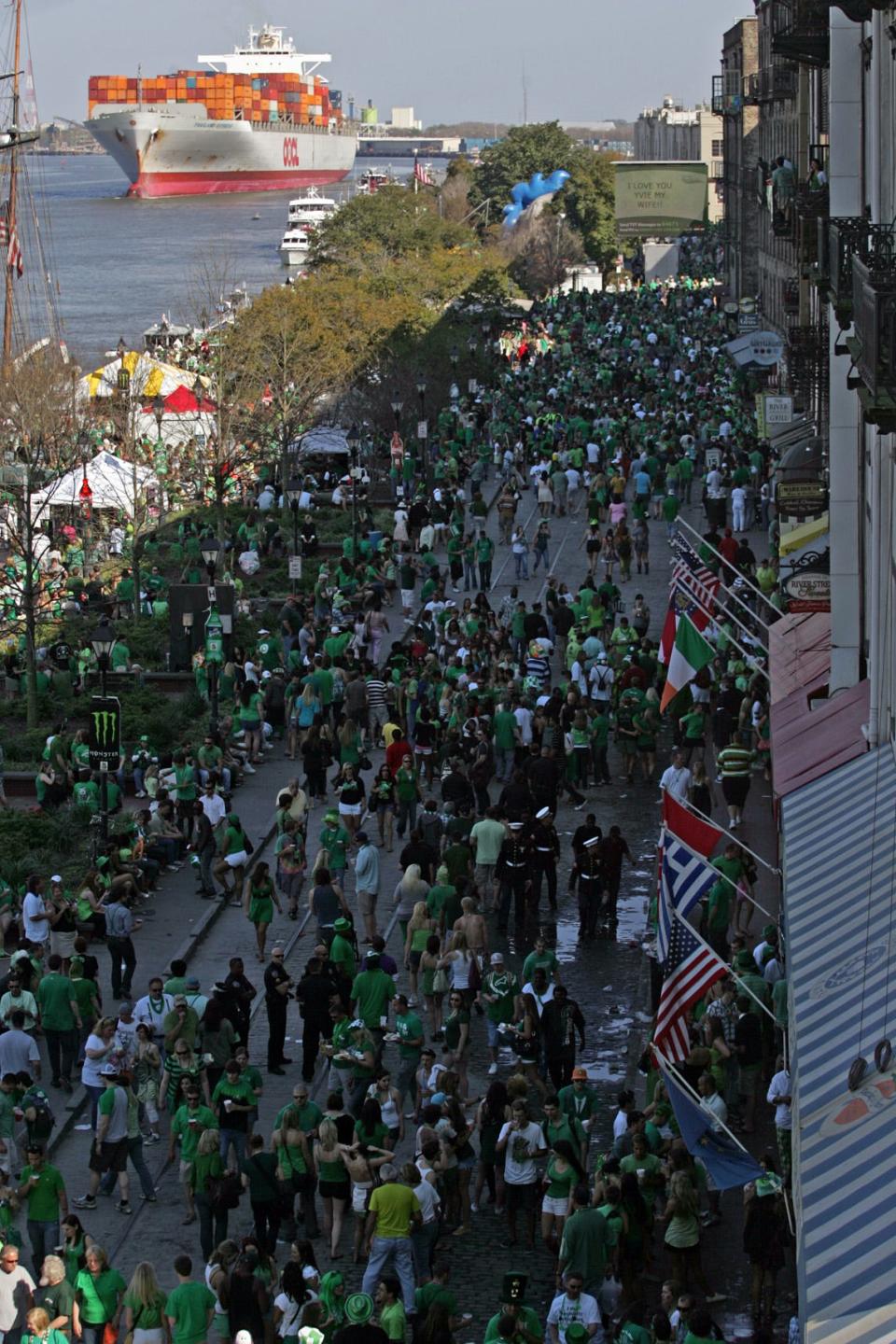
The St. Patrick's Day festival has evolved drastically over the years, with the abolishment of old rules, the creation of new ones and gradual expansion of the "festival zone."
On March 9, Savannah City Council approved the latest changes, which are small adjustments to the wide-ranging overhaul done last year. In addition, city marshals will be positioned in squares along the parade route and empowered to write citations for littering.
Here's a look back at Savannah's St. Patrick's Day festival changes through the years.
1999: Fencing erected at all entrances to River Street to control crowds. Partiers who wish to drink alcohol on the street must show ID at the entrances and purchase a $5 wristband. Those caught drinking without a wristband face a $90 fine. The Savannah Waterfront Association, a coalition of River Street businesses, manages the on-street festival, which includes on-street vendors and three temporary outdoor stages for live music.
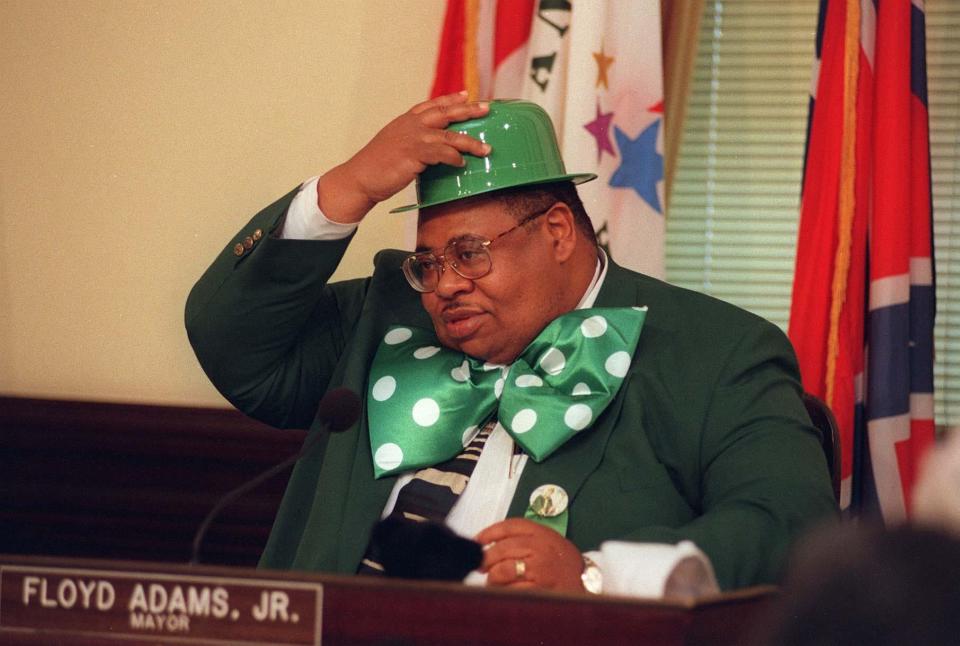
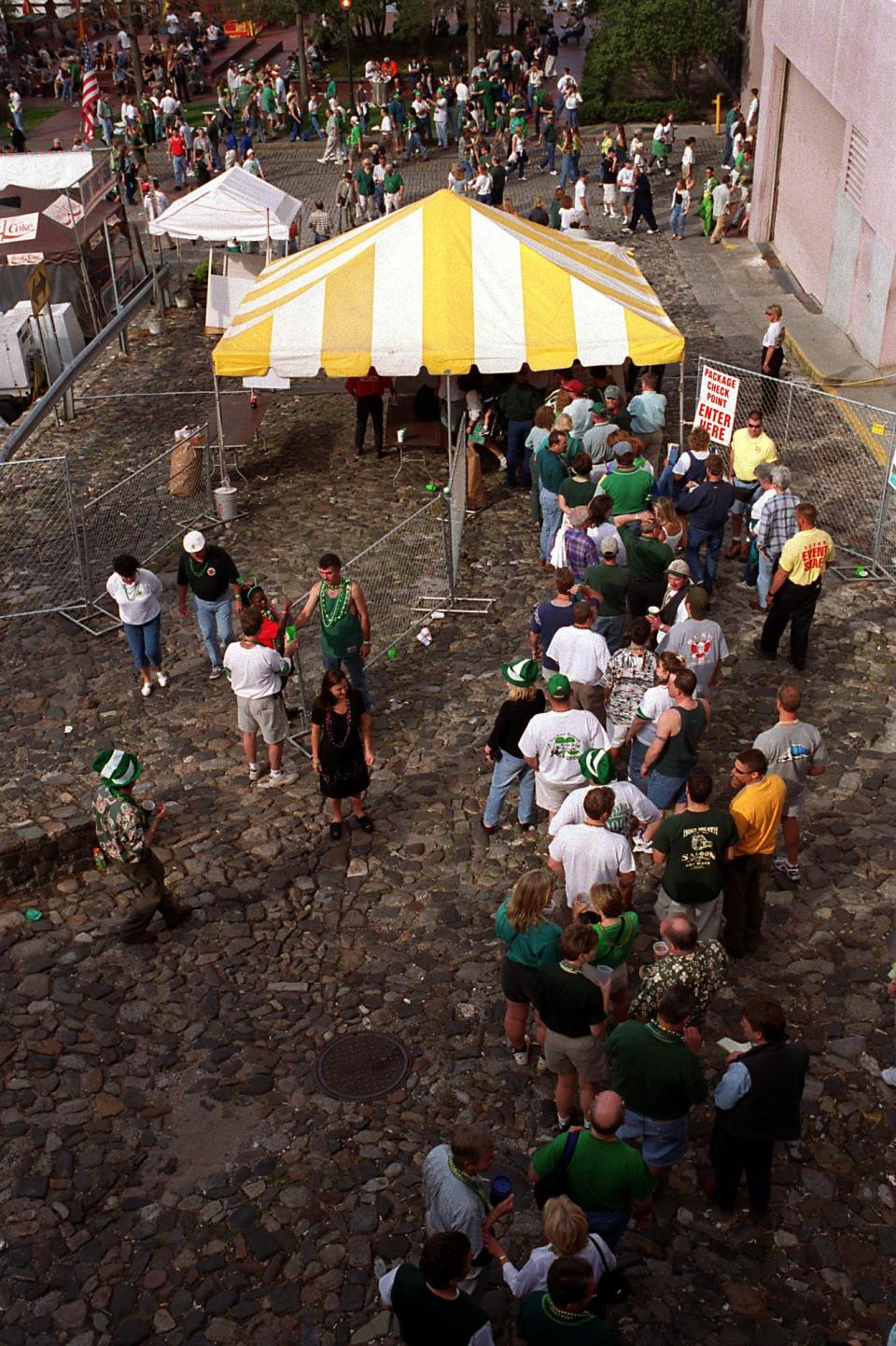
2000: City limits size of go-cups in the festival zone to 16 ounces, down from 32 ounces.
2001: The St. Patrick’s Day party crowd on River Street swells to the point the Savannah Police close the festival area entrances at 1015 p.m. Partiers shut off from River Street congregated on Bay Street instead, leading to the closure of Bay Street to traffic around 11:15 p.m. out of concern for public safety.
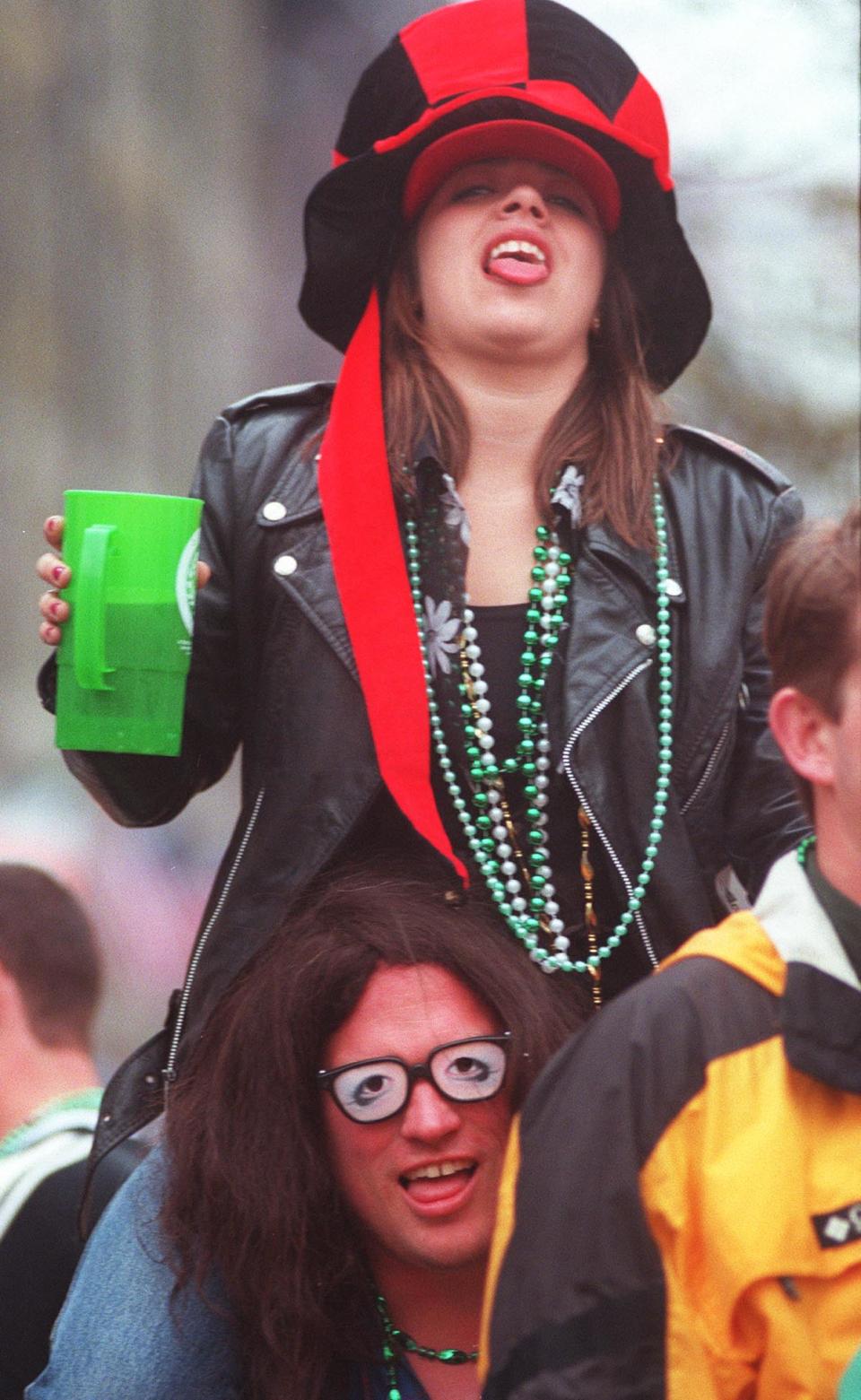
2002: Due to the overflow crowds on River Street the previous year, the city makes a portion of Bay Street pedestrian only, closing the road to traffic between Martin Luther King Jr. Boulevard and Price Street. In the wake of the Sept. 11 terrorist attacks, the city steps up searches of bags and backpacks at the River Street entrance gates. River Street retailers granted licenses to sell beer from their stores during the celebration.
2004: Then-Alderman Tony Thomas questions the Savannah Waterfront Association’s management of the festival, including the city footing the bill for portable potties on River Street. The SWA counters by canceling the St. Patrick’s Day festival on Feb. 20 but reverses course a day later after then-Mayor Otis Johnson vows to hire a new operator and says that “The St. Patrick’s Day festival will go on.”
2005: City imposes a $100 transient merchant fee on permit applications for festival hawkers, street vendors and peddlers, and bans the “selling of any items which graphically depict human genitalia, nudity, sex acts, or displays images or language deemed to be lewd or offensive.” The move is in response to a rash of incidents the year prior, when police made 27 arrests and wrote 89 citations for both indecency and public urination.
2008: Gating along River Street removed, with city officials saying monitoring gate access took too many police resources. City institutes shuttle buses to ease mobility concerns, but the service sees only 160 riders.
2010: With St. Patrick’s Day falling on a Wednesday, organizers forego outdoor entertainment on River Street.
2011: Wristband requirement suspended, following a recommendation from a study committee.
2012: Public display of snakes, lizards and other reptiles are banned after a handful of python-touting partiers attended the 2011 parade and festival. "If it has scales and is cold-blooded, you cannot bring it," said a city official. Citing cost concerns, the Savannah Waterfront Association books DJs instead of live bands for the outdoor stages along River Street.
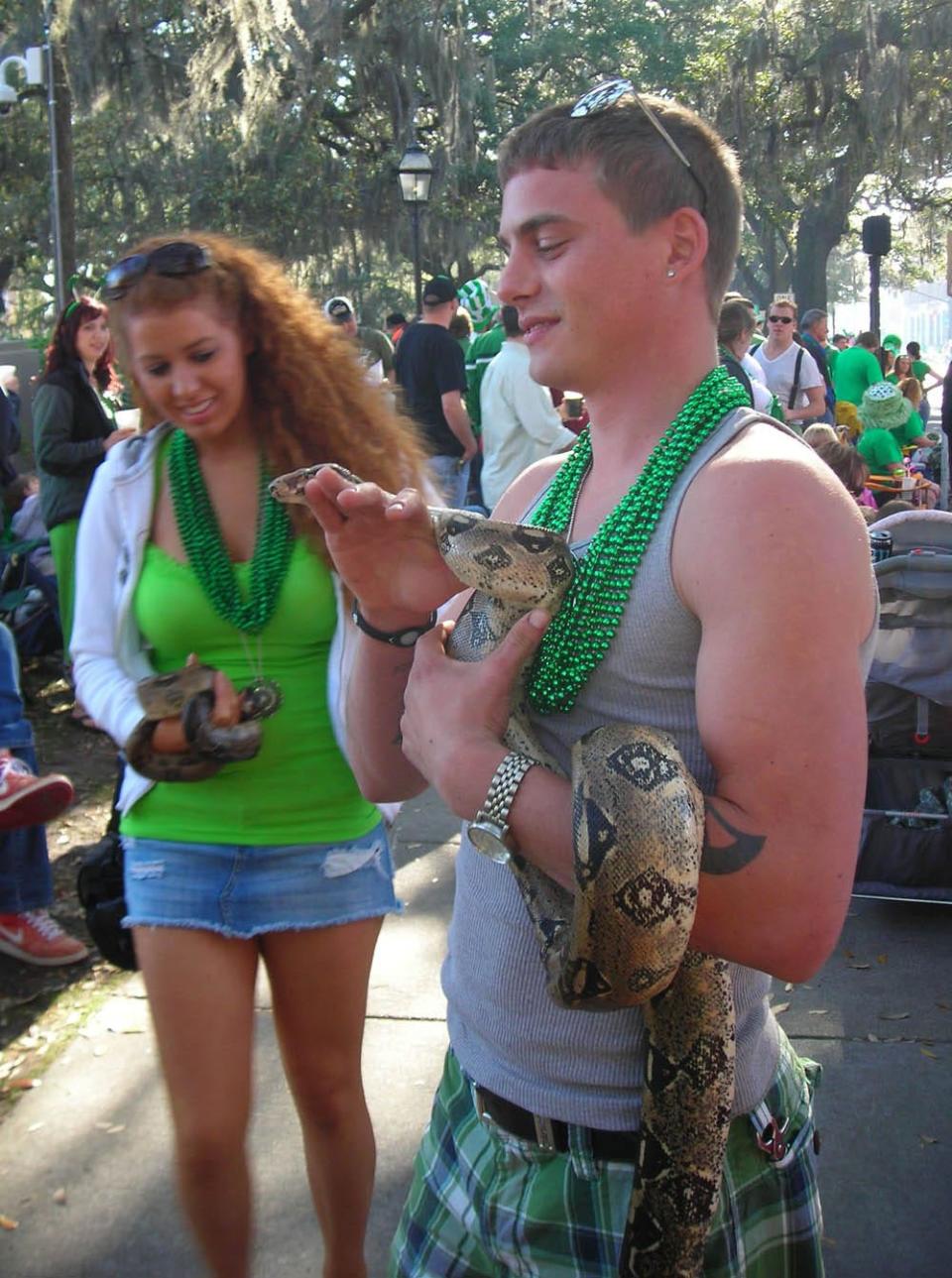
2013: The River Street festival zone expands, stretching south to Broughton Street between Martin Luther King Jr. Boulevard and East Broad Street. The city closes streets in that area to most traffic and partiers. The wristband requirement is reinstated for those who want to drink on the street in the control zone, with the Savannah Waterfront Association, City Market and Downtown Business Association joining together to coordinate sales. City receives $1 from every wristband sale to help offset sanitation and public safety costs. Dogs added to banned animal list.
2014: With St. Patrick’s Day falling on a Monday, the festival is lengthened to four days, starting at 5 p.m. on Friday, March 14. The festival zone stretches farther south to Jones Street.
2017: Wristband prices doubled from $5 to $10
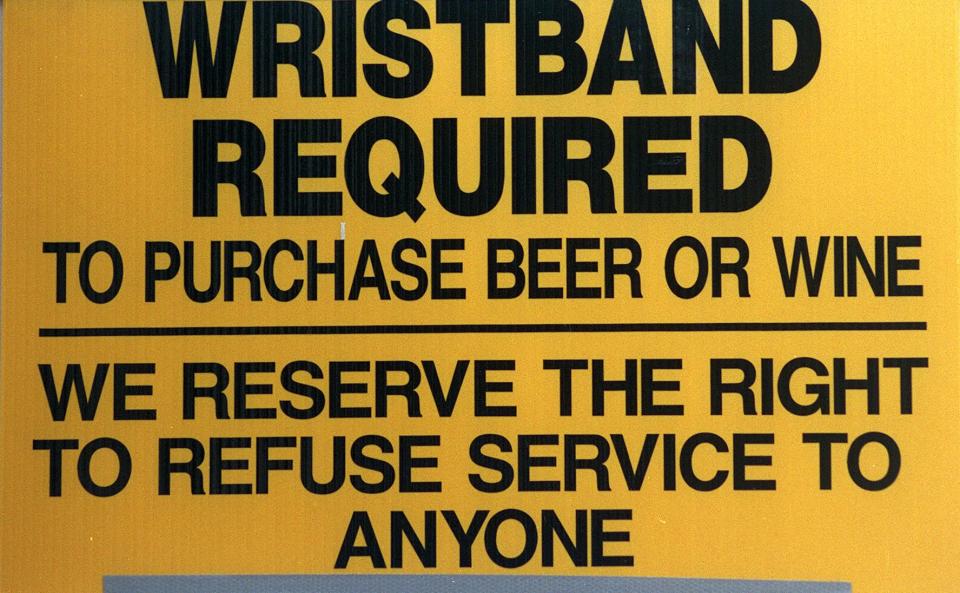
2020: With the COVID-19 outbreak spreading across the country, Mayor Van Johnson cancels the St. Patrick’s Day festival and pulls the parade permit from the Savannah St. Patrick’s Day Parade Committee, the private entity that puts on the parade.
2021: The COVID-19 pandemic leads to another St. Patrick’s Day cancellation.
2022: Savannah City Council abolishes permits for on-street food and alcohol venders, extends festival zone boundary to Victory Drive, and prohibits out-of-town motorcoaches within the Historic District.
2023: Savannah city staffers are posted in squares along the parade route to help combat littering. These litter marshals are empowered to issue citations for littering as well as other city ordinance infractions.
This article originally appeared on Savannah Morning News: Savannah St. Patrick's Day parade has weathered changes over years

